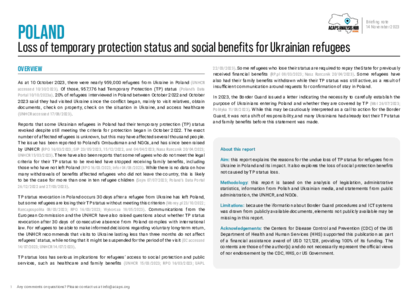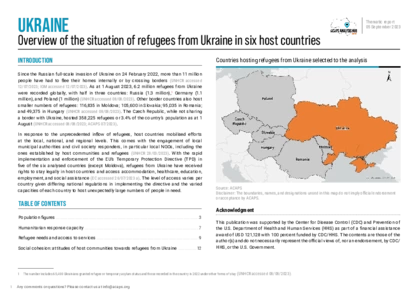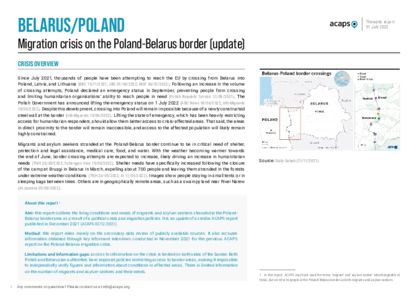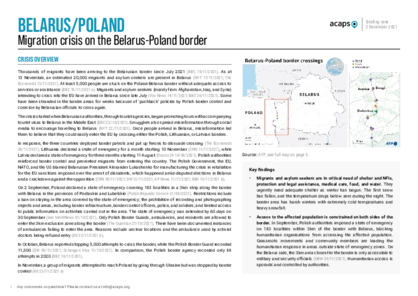Latest updates on country situation
12 June 2023
Approximately 140 of the 3,000 children displaced to Poland from Ukrainian foster care institutions returned to Ukraine at the request of the Ukrainian regional administration, some to the oblasts that continue to experience shelling. New orphanages are being built in Ukraine to accommodate another 1,000 children. NGOs have raised concerns over the lack of assessment of the best interests of returning children and have appealed for placing them in family-based care. Although family-based and small-group care has been proven to foster children’s development, Polish law prevents refugee children who arrived with guardians from being placed in family-based care The Government of Ukraine has also requested for groups of children, even large ones, to not be split. (STC 15/05/2023,
Interia 09/09/2022,
(KII 07/06/2023))
05 June 2023
Between late February and late April 2023, 15,000 Ukrainian refugees in Poland left collective centres. It can be assumed that this is a result of the introduction of a new scheme in March 2023 requiring refugees to cover 50% of their subsistence (approximately USD 10 per day) 120 days after their arrival and 75% (approximately USD 15 per day) after 60 more days (a total of 180 days since their arrival). For some refugees, cash support is insufficient, affecting their access to housing. (ISAP 12/03/2022, RMF24 30/03/2023, Radio Opole 29/04/2023, UNHCR 20/01/2023, PCPM 18/01/2023)
Analysis products
on
Poland
14 November 2023
Poland: loss of temporary protection status and social benefits for Ukrainian Refugees
DOCUMENT / PDF / 2 MB
Reports that some Ukrainian refugees in Poland had their temporary protection (TP) status revoked despite still meeting the criteria for protection began in October 2022. There have also been reports that some refugees who do not meet the legal criteria for their TP status to be revoked have stopped receiving family benefits, including those who have not left Poland.
05 September 2023
Ukraine: regional overview of Ukrainian refugees in host countries
DOCUMENT / PDF / 2 MB
This report provides an overview of the situation of refugees from Ukraine in six host countries: the Czech Republic, Hungary, Moldova, Poland, Romania, and Slovakia. The report aims to compare the scale of displacement in each country and their response capacity.
Attached resources
01 July 2022
Migration crisis on the Poland-Belarus border
DOCUMENT / PDF / 330 KB
This report outlines the living conditions and needs of migrants and asylum seekers stranded in the Poland-Belarus border area as a result of a political crisis and migration policies. It is an update of a similar ACAPS report published in December 2021.
25 May 2022
Poland: Refugee influx from Ukraine
DOCUMENT / PDF / 1 MB
Approximately 3.5 million people have arrived in Poland from Ukraine since 24 February 2022. This number corresponds to roughly 53% of the 6.5 million people who have fled Ukraine because of the war. Although many Ukrainians choose Poland, it is uncertain how many migrants and refugees intend to stay in Poland and how many have already moved to other locations.
02 December 2021
Migration crisis on the Belarus-Poland border
DOCUMENT / PDF / 610 KB
Thousands of migrants have been arriving to the Belarusian border since July 2021. As at 13 November, an estimated 20,000 migrants and asylum seekers are present in Belarus. At least 5,000 people are stuck on the Poland-Belarus border without adequate access to services or assistance.






